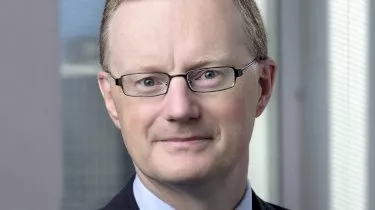Invest
Could immigration revive wage growth? RBA governor suggests it’s possible
The RBA governor has drawn a parallel between immigration and wages growth, suggesting that while immigration has been known to dilute the upwards pressure on wages, recent events are implying the opposite holds.
Could immigration revive wage growth? RBA governor suggests it’s possible
The RBA governor has drawn a parallel between immigration and wages growth, suggesting that while immigration has been known to dilute the upwards pressure on wages, recent events are implying the opposite holds.

In a speech to the Economic Society of Australia, the governor of the Reserve Bank of Australia noted that subdued wages growth had become a familiar pattern before the pandemic, pinning the lack of upwards pressure on wages on strong uplifts in both labour demand and supply.
According to Philip Lowe, the strong growth in labour demand was closely matched by a strong increase in labour supply. With both demand and supply rising, there was little need for the price – that is wages – to move.
“Immigration adds to both the supply of, and demand for, labour: when immigrants work they supply labour and their consumption of goods and services adds to the demand for labour,” Mr Lowe said.
“The picture, though, is clearer when firms are hiring workers to overcome bottlenecks and fill specific gaps where workers are in short supply.

“This hiring dilutes the upward pressure on wages in these hotspots, and it is possible that there are spillovers to the rest of the labour market. This hiring can also dilute the incentive for businesses to train workers to do the required job,” he continued.
But while this may have been the theory prior to the pandemic, Mr Lowe’s later observations of Australia’s current labour shortages seem to suggest the opposite.
Noting that while labour demand is currently outpacing supply as a direct result of the ongoing closure of international borders, wage increases have remained modest for most workers.
“Most firms retain their strong focus on cost control, with many preferring to wait things out until the borders open, and ration output in the meantime,” he said.
“Previously, some of these vacancies could have been filled by people on visas, this is now more difficult to do. Since March 2020, the number of people in Australia on a visa with the right to work has fallen by over 250,000, which is a significant decline,” he added.
Looking ahead, Mr Lowe suggested that the closure of the borders is making it more difficult to match workers with jobs, opening the possibility that labour shortages occur at a higher rate of unemployment than previously expected.
Moreover, recent research by the RBA has backed this possibility, suggesting also that wage growth actually occurs at lower rates of unemployment.
Namely, having examined the relationship between the unemployment rate in nearly 300 individual local labour markets across Australia and the average increase in labour income in these markets using data from the Australian Taxation Office, the RBA’s researchers arrived at the conclusion that tighter labour markets do generate stronger wage increases and that the relationship seems to be stronger at unemployment rates below 5 per cent.
“These are important conclusions from a policy perspective, especially given the RBA’s strategy is to get the unemployment rate down so that wages growth picks up and inflation returns in a sustainable way to the target range.”
About the author

About the author


Economy
CPI data another piece in RBA's interest rate decision puzzle, says REIA
The latest Consumer Price Index (CPI) data from the Australian Bureau of Statistics (ABS) shows that inflation rose 3.4% in the 12 months to February 2024, unchanged from the previous two months, ...Read more

Economy
Including passive job seekers in unemployment measure doesn't impact economic cycle view, study finds
New research from e61 Institute has found that while current unemployment measures may not capture all job seekers, broader definitions that include passive job searchers do not provide better ...Read more

Economy
Survey reveals heightened job security concerns among IT workers in 2024
A recent survey conducted by Authority Hacker has revealed that 89.66% of IT workers in the United States have increased concerns about job loss in 2024. Read more

Economy
Australian founders adapt to the challenging fundraising environment with optimism and strategic shifts
The landscape for start-up funding in Australia has been increasingly challenging, but this has not dampened the spirit of the country's entrepreneurs. Read more

Economy
Signs point to possible US economic 'soft landing' in ClearBridge analysis
The US economy may be steering towards a 'soft landing' despite mixed signals from the stock market, according to a recent analysis by ClearBridge Investments. Read more

Economy
Alternative fund managers predict capital raising surge in 2024
Alternative investment fund managers are predicting a sizable increase in capital raising efforts in 2024, according to a global study by Ocorian, a leading alternative investment fund administratorRead more

Economy
Understanding the economic indicators that affect your earnings
The landscape of personal finance is profoundly influenced by broader economic trends and indicators. Read more

Economy
Navigate market turbulence with expert advice: no crystal ball needed
In an era fraught with investment market uncertainties, from fluctuating interest rates to geopolitical strife, seasoned market experts are guiding investors through the mire, offering sage advice on ...Read more

Economy
CPI data another piece in RBA's interest rate decision puzzle, says REIA
The latest Consumer Price Index (CPI) data from the Australian Bureau of Statistics (ABS) shows that inflation rose 3.4% in the 12 months to February 2024, unchanged from the previous two months, ...Read more

Economy
Including passive job seekers in unemployment measure doesn't impact economic cycle view, study finds
New research from e61 Institute has found that while current unemployment measures may not capture all job seekers, broader definitions that include passive job searchers do not provide better ...Read more

Economy
Survey reveals heightened job security concerns among IT workers in 2024
A recent survey conducted by Authority Hacker has revealed that 89.66% of IT workers in the United States have increased concerns about job loss in 2024. Read more

Economy
Australian founders adapt to the challenging fundraising environment with optimism and strategic shifts
The landscape for start-up funding in Australia has been increasingly challenging, but this has not dampened the spirit of the country's entrepreneurs. Read more

Economy
Signs point to possible US economic 'soft landing' in ClearBridge analysis
The US economy may be steering towards a 'soft landing' despite mixed signals from the stock market, according to a recent analysis by ClearBridge Investments. Read more

Economy
Alternative fund managers predict capital raising surge in 2024
Alternative investment fund managers are predicting a sizable increase in capital raising efforts in 2024, according to a global study by Ocorian, a leading alternative investment fund administratorRead more

Economy
Understanding the economic indicators that affect your earnings
The landscape of personal finance is profoundly influenced by broader economic trends and indicators. Read more

Economy
Navigate market turbulence with expert advice: no crystal ball needed
In an era fraught with investment market uncertainties, from fluctuating interest rates to geopolitical strife, seasoned market experts are guiding investors through the mire, offering sage advice on ...Read more






